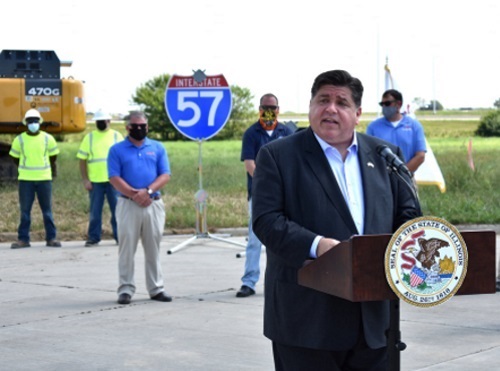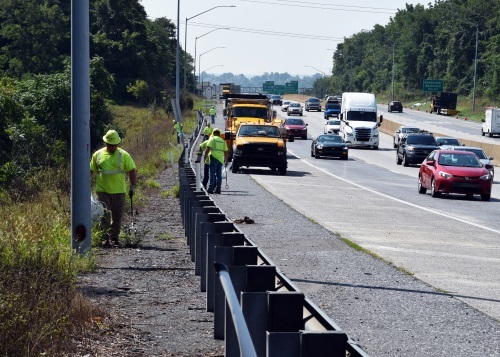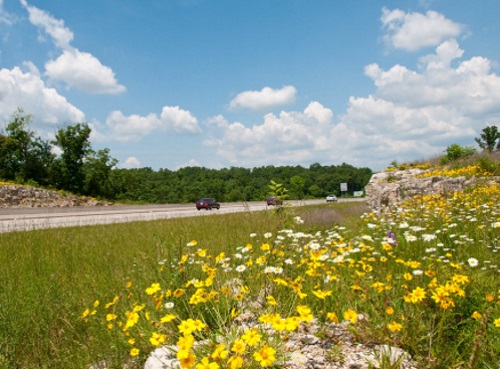FEDERAL ACTION
House votes to advance Biden’s jobs and infrastructure plans, breaking logjam – NBC News
Schumer says infrastructure bills edge U.S. close to Biden climate goals – Reuters
Bipartisan infrastructure plan could create over 800K new jobs by 2030, S&P analysis shows – Fox Business
White House taps veteran transportation official to help break log jams at the nation’s ports – Washington Post
COVID-19
TSA sees lowest air travel numbers since May – CBS Evening News
Will the Pandemic Make Los Angeles More Pedestrian-Friendly? – New York Times
Hawaii’s Governor Asks Tourists To Stay Away Because Of COVID – AP
Can Rush Hour Be Banished? – CityLab
NEPA
Biden’s Infrastructure Bill and the Promise of NEPA Reform – Pillsbury Winthrop Shaw Pittman
INFRASTRUCTURE RESILIENCE AND SUSTAINABILITY
A midwestern town moved uphill to survive the elements. Can others do the same? – The Guardian
Rapidly electrifying fleets: Adaptive planning and a phased approach are key – Mass Transit (Op-Ed)
FAA Invests $766M to Build Safer, More Sustainable Airports – FAA (Media release)
AIR QUALITY
Port of Long Beach completes new all-electric container terminal – Splash
The Best Cities for Low Carbon Emissions Aren’t the Tallest – CityLab
Green hydrogen could be the fuel of the future. Here’s why it’s not yet a silver bullet – CNN
It’s time to rethink air conditioning – Vox (Commentary)
ENVIRONMENTAL JUSTICE
Some Portlanders speak up about environmental justice concerns – KOIN-TV
NATURAL RESOURCES
Utah DOT’s Use of Video to Stop Litter and Save Lives – AASHTO
Wild fire guards should be part of urban planning – The Interior News (Opinion)
Litter push removes 11,000 pounds of roadside garbage in Tucson region – Arizona DOT (Media release)
CULTURAL RESOURCES
Minnesota’s Metro Transit unveils rain art at more than a dozen bus, LRT stops – KMSP-TV
HEALTH AND HUMAN ENVIRONMENT/ACTIVE TRANSPORTATION
Deployment of MaaS/MOD Strategies with Carol Schweiger – ITE Talks Transportation podcast
Cities that favored pedestrians over cars are reversing course – Quartz
Grants aim to improve bike, pedestrian access across Greater Boston – Boston Globe
Abandoned Kansas City Railroad Bridge to Get New Life as Tourist Hot Spot – Engineering News-Record
People with disabilities demand better sidewalks, transit in Snohomish County, Washington – Herald
TRB RESOURCES/ANNOUNCEMENTS
Racial Equity Addendum to Critical Issues in Transportation – TRB
Conference on Advancing Transportation Equity – September 9-14 – TRB
(In)Justice in Managed Retreat as Climate Adaptation – Princeton University (Webinar)
2021 Florida Commuter Transportation Summit – FDOT (Agenda and link to registration)
MobilityXX Presents: Advancing Gender Equitable Transportation for Los Angeles – ITS America (Webinar)
FEDERAL REGISTER NOTICES
Re-Designation of the Primary Highway Freight System (PHFS) – FHWA (Notice; request for information)
Notice of Intent To Prepare an Environmental Impact Statement for the Buffalo-Amherst-Tonawanda Corridor Transit Expansion, Erie County, New York – FTA (Notice)
Draft Programmatic Environmental Impact Statement for Surveying and Mapping Projects in U.S. Waters for Coastal and Marine Data Acquisition, Extension of Public Comment Period – NOAA (Notice; extension of comment period)
Safety Zone; Piscataqua River Turning Basin Dredge Project, Portsmouth, NH – Coast Guard (Notice of proposed rulemaking)
Manti-La Sal National Forest; Utah; Revision of the Manti-La Sal National Forest Land Management Plan – Forest Service (Notice of intent to prepare an environmental impact statement)
Notice of Availability of Draft Environmental Impact Statement for Purchase of Next Generation Delivery Vehicles – Postal Service (Notice)



